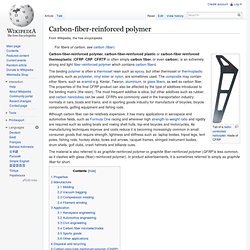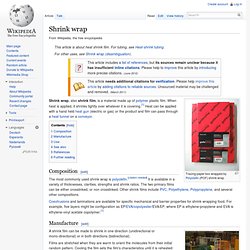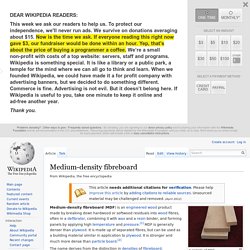

Dynamic response and energy dissipation characteristics of balsa wood: experiment and analysis. Abstract Dynamic response of a cellular sandwich core material, balsa wood, is investigated over its entire density spectrum ranging from 55 to 380 kg/m3.

Specimens were compression loaded along the grain direction at a nominal strain rate of 3 × 103 s−1 using a modified Kolsky (split Hopkinson) bar. The dynamic data are discussed and compared to those of quasi-static experiments reported in a previous study (Mech. Mater. 35 (2003) 523). Results show that while the initial failure stress is very sensitive to the rate of loading, plateau (crushing) stress remains unaffected by the strain rate. Keywords. Carbon-fiber-reinforced polymer. Although carbon fiber can be relatively expensive, it has many applications in aerospace and automotive fields, such as Formula One racing and wherever high strength-to-weight ratio and rigidity are required such as sailing boats and rowing shell hulls, top-end bicycles and motorcycles, As manufacturing techniques improve and costs reduce it is becoming increasingly common in small consumer goods that require strength, lightness and stiffness such as: laptop bodies, tripod legs, tent poles, fishing rods, hockey sticks, bows and arrows, racquet frames, stringed instrument bodies, drum shells, golf clubs, crash helmets and billiards cues.

The material is also referred to as graphite-reinforced polymer or graphite fiber-reinforced polymer (GFRP is less common, as it clashes with glass-(fiber)-reinforced polymer). In product advertisements, it is sometimes referred to simply as graphite fiber for short. Polyester. SEM picture of a bend in a high-surface area polyesterfiber with a seven-lobed cross section Close-up of a polyester shirt Polyester is a category of polymers which contain the ester functional group in their main chain.

Although there are many polyesters, the term "polyester" as a specific material most commonly refers to polyethylene terephthalate (PET). Polyesters include naturally occurring chemicals, such as in the cutin of plant cuticles, as well as synthetics through step-growth polymerization such as polycarbonate and polybutyrate. Natural polyesters and a few synthetic ones are biodegradable, but most synthetic polyesters are not. Depending on the chemical structure, polyester can be a thermoplastic or thermoset, there are also polyester resins cured by hardeners; however, the most common polyesters are thermoplastics.[1] Usa.dupontteijinfilms.com/informationcenter/downloads/Physical_And_Thermal_Properties.pdf. Shrinkage modeling of polyester shrink film. US6623821.pdf. Shrink wrap. Tracing paper box wrapped by Polyolefin (POF) shrink wrap Shrink wrap, also shrink film, is a material made up of polymer plastic film.

When heat is applied, it shrinks tightly over whatever it is covering.[1] Heat can be applied with a hand held heat gun (electric or gas) or the product and film can pass through a heat tunnel on a conveyor. Composition[edit] The most commonly used shrink wrap is polyolefin. [citation needed] It is available in a variety of thicknesses, clarities, strengths and shrink ratios. Coextrusions and laminations are available for specific mechanical and barrier properties for shrink wrapping food. Manufacture[edit] A machine designed to continuously wrap up to 35 packets per minute A shrink film can be made to shrink in one direction (unidirectional or mono-directional) or in both directions (bidirectional).
Films are stretched when they are warm to orient the molecules from their initial random pattern. Shrink wrap. Www.oracover.de/downloads/Product_Information/Product-Information_2010_engl.pdf. Properties of medium-density fibreboard (MDF) based on wheat straw and melamine modified urea formaldehyde (UMF) resin. Abstract Wheat straw was investigated as a raw material for manufacturing of medium density fibreboard (MDF) in a fully equipped pilot-plant.

Commercial urea melamine formaldehyde (UMF) and a mixture of UMF-resin and urea melamine phenol formaldehyde (UMPF) adhesives were used as binders in manufacturing of high performance MDF. Publications/XPYe11.pdf. Medium-density fibreboard. Medium-density fibreboard (MDF) is an engineered wood product made by breaking down hardwood or softwood residuals into wood fibres, often in a defibrator, combining it with wax and a resin binder, and forming panels by applying high temperature and pressure.[1] MDF is generally denser than plywood.

It is made up of separated fibres, but can be used as a building material similar in application to plywood. It is stronger and much more dense than particle board.[2] The name derives from the distinction in densities of fibreboard. Large-scale production of MDF began in the 1980s, in both North America and Europe.[3] Physical properties[edit] Over time, the word "MDF" has become a generic name for any dry process fiber board. Types[edit] There are different kinds of MDF, which are sometimes labeled by colour: Moisture resistant is typically greenFire retardant MDF is typically red or blue Manufacture[edit] Www.epa.gov/ttnchie1/ap42/ch10/final/c10s0603.pdf. 128.104.77.228/documnts/pdf2001/krzys01a.pdf. US20080032147.pdf. Eprints.uthm.edu.my/619/1/ijiev22010p4.pdf. Effects of coupling agent on the physical properties of wood-polymer composites. 3.

Composites/powders/polymers/resins Department of Chemistry, Faculty of Science and Technology, University of Western Sydney, Nepean, Kingswood, 2747 Australia Available online 20 March 2000 Choose an option to locate/access this article: Check if you have access through your login credentials or your institution Check access Show more Show less Get rights and content Wood-polymer composites based on two Australian commercial timbers, radiata pine (pinus radiata) a soft wood and fast growing plantation timber, and blackbutt (eucalyptus piluliaris), a hard wood which is also a plantation timber, were prepared using the vinyl monomer, methyl methacrylate (MMA).
It has been established that polymethyl methacrylate does not form bonds with the hydroxyl groups of the cellulose fibres but simply bulks the void spaces within the wood structure. Info.tuwien.ac.at/werkstoffkunde/VO_Biomaterials/meyers_chem_etal_progmatsci_compr_6.0a.pdf. Cellular Solids: Structure and Properties - Lorna J. Gibson, Michael F. Ashby.